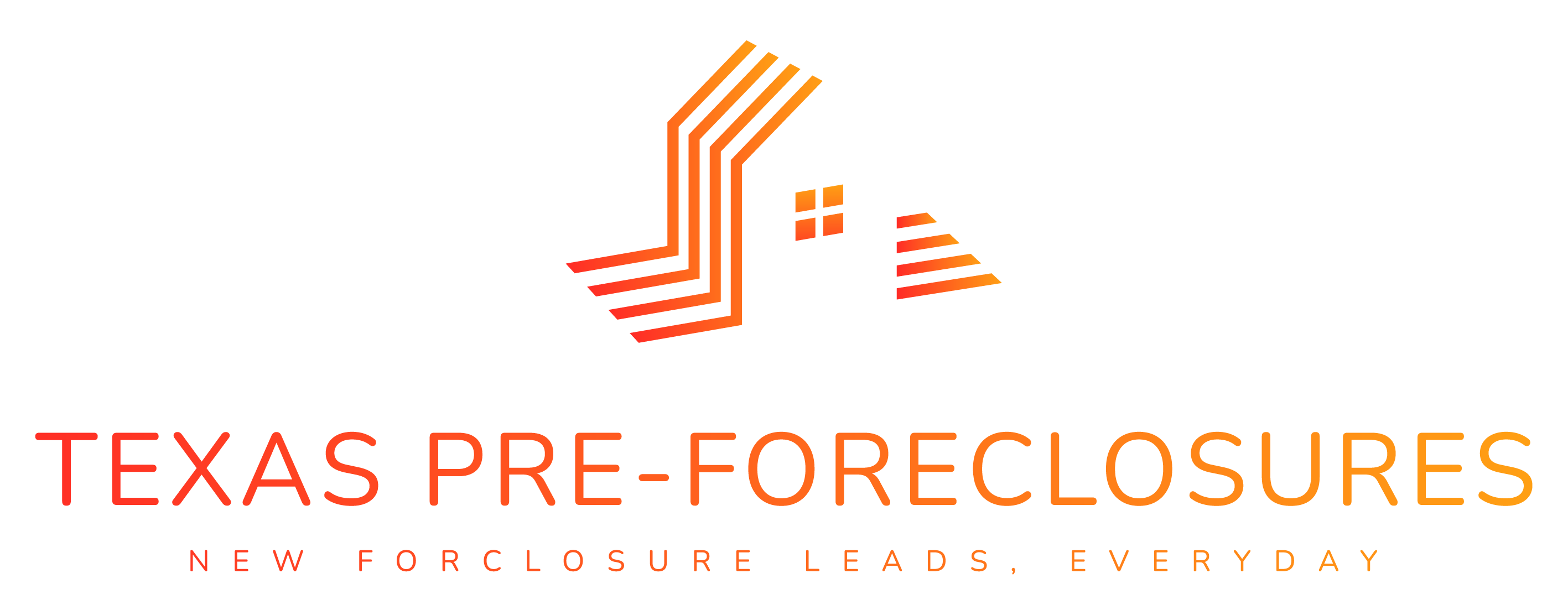Facing Foreclosure in Texas: A Guide to Loan Modifications and Finding Hope
Facing Foreclosure in Texas: A Guide to Loan Modifications and Finding Hope
The state of Texas, known for its wide-open spaces and independent spirit, also boasts a diverse housing market. However, for some homeowners, the dream of owning a piece of the Texas landscape can turn into a nightmare when faced with the possibility of foreclosure. Financial hardships such as job loss, medical emergencies, or unexpected expenses can leave you struggling to make mortgage payments. This article aims to empower homeowners facing foreclosure in Texas by providing crucial information about loan modifications, exploring alternative solutions, and offering resources for navigating this challenging situation.
Understanding Foreclosure in Texas:
Foreclosure is the legal process by which a lender repossesses a property due to missed mortgage payments. In Texas, the foreclosure process is considered non-judicial, meaning it doesn’t involve a court hearing unless the homeowner disputes the foreclosure. This can make the process seem faster and more streamlined, but it also emphasizes the importance of taking proactive measures to avoid foreclosure in the first place.
The Lifeline: Exploring Loan Modifications:

If you’re facing foreclosure in Texas, a loan modification might be your lifeline. A loan modification is a process where your lender agrees to change the terms of your existing mortgage, making it more affordable and preventing foreclosure. This can involve:
Reducing the interest rate: This lowers your monthly payments, making it easier to manage your mortgage.
Extending the loan term: This spreads out your loan over a longer period, resulting in lower monthly payments but ultimately increasing the total interest paid.
Forgiving a portion of the principal: This reduces the total amount you owe on the loan, thereby decreasing your monthly payments.
Are You Eligible for a Loan Modification?
To qualify, you generally need to:
Demonstrate Financial Hardship: You’ll need to prove that an unforeseen event (job loss, illness, etc.) has made it difficult to keep up with payments.
Have Sustainable Income: You must show you can manage the modified payments moving forward.
Occupy the Home: Loan modifications are often reserved for owner-occupied properties.
How to Apply for a Loan Modification
- Contact Your Lender: Don’t delay! Reach out to your lender as soon as you anticipate trouble making payments. Explain your situation and ask about their loan modification program.
- Gather Documentation: Be prepared to provide financial records like pay stubs, tax returns, and bank statements to support your hardship claim.
- Submit the Application: Each lender has its own process and required paperwork. Follow the instructions closely.
- Be Patient: The review process can take weeks or even months. Stay in touch with your lender and provide any additional information they request.
Loan Modification Processing Time:
The timeframe for loan modification approval in Texas can vary depending on the complexity of your case, the lender’s workload, and communication efficiency. However, expect the process to take anywhere from 3 to 6 months. It’s crucial to be patient and persistent throughout the process, staying in regular contact with your lender and providing any requested information promptly. In some cases, a lender will be able to streamline the modification process, and the loan modification may be able to occur within the week.
Things to Keep in Mind
- Not Guaranteed: Lenders aren’t obligated to grant you a loan modification. They assess cases individually.
- Scams: Be wary of companies promising guaranteed loan modifications or charging hefty upfront fees.
- Professional Help: Consider consulting a HUD-approved housing counselor or an attorney specializing in foreclosure defense for guidance and support during the process.
Once your loan modification is approved, there are typically three key steps:
- Trial Period: Most lenders require a trial period, usually lasting 3 months, during which you must make your modified monthly payments on time. Failure to do so can result in the rescission of the loan modification and the resumption of foreclosure proceedings.
- Loan Modification Documentation Finalization: After successfully completing the trial period, your lender will finalize the loan modification agreement, which will legally reflect the new terms of your mortgage.
- Moving Forward: With the finalized loan modification agreement in place, you can continue making your new monthly payments and work towards financial stability.
Additionally, some lenders may report a loan modification as a debt settlement to the various credit bureaus, which may impact the borrower’s credit. As such, it is important to ask whether or not a lender or servicer will do so, as that could impact loan terms in the future.
Beyond Loan Modifications: Exploring Other Options:
Even if a loan modification isn’t successful, there are still options to explore:
- Forbearance: This allows you to temporarily reduce or suspend your monthly payments while working with your lender to find a long-term solution.
- Short sale: You sell your property for less than what you owe on your mortgage, with the lender typically agreeing to forgive the remaining debt.
- Deed-in-lieu of foreclosure: You voluntarily transfer ownership of your property to the lender in exchange for avoiding foreclosure proceedings.
Finding Help and Resources:
Facing foreclosure can be overwhelming, but you don’t have to navigate it alone. Here are some resources available to Texas homeowners:
- Texas Homeownership & Mortgage Foreclosure Hotline: 1-877-893-8267
- Texas Attorney General’s Office: https://www.tdlr.texas.gov/
- HUD-approved housing counseling agencies: https://www.hud.gov/program_offices/housing/sfh/hcc/housing_counseling
Remember, facing foreclosure doesn’t have to define you

By taking proactive steps, exploring all available options, and seeking help from qualified professionals, you can increase your chances of finding a solution and navigating this challenging situation with resilience and hope.
Additional Considerations:
- This blog post is for informational purposes only and does not constitute legal or financial advice. Always consult with qualified professionals in these fields for personalized guidance regarding your specific situation.
- It’s important to understand that foreclosure laws and regulations can vary depending on your specific circumstances and location.
- Staying informed about the latest updates regarding foreclosure prevention programs and resources is crucial for making informed decisions.
